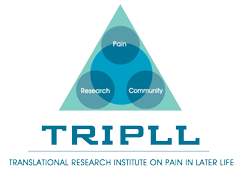Una Makris, MD
Patricia Kim2022-06-09T16:20:53-04:00Title: MOTIVATE: Moving to Improve Chronic Back Pain and Depression in Older Adults Investigator: Una Makris, MD, University of Texas Southwestern Medical Center Overview: The overarching goal of this study is to evaluate a tele-based behavioral change intervention for older adults (aged 50 years and older) with chronic low back pain (cLBP) and comorbid depression, and to ultimately assess its effect on cLBP-related disability and depressive symptoms. Investigators will conduct a pilot randomized control trial to assess feasibility for older adults with chronic low back pain and depression to receive a behavioral change tele-based intervention delivered by a health coach trained in [...]
